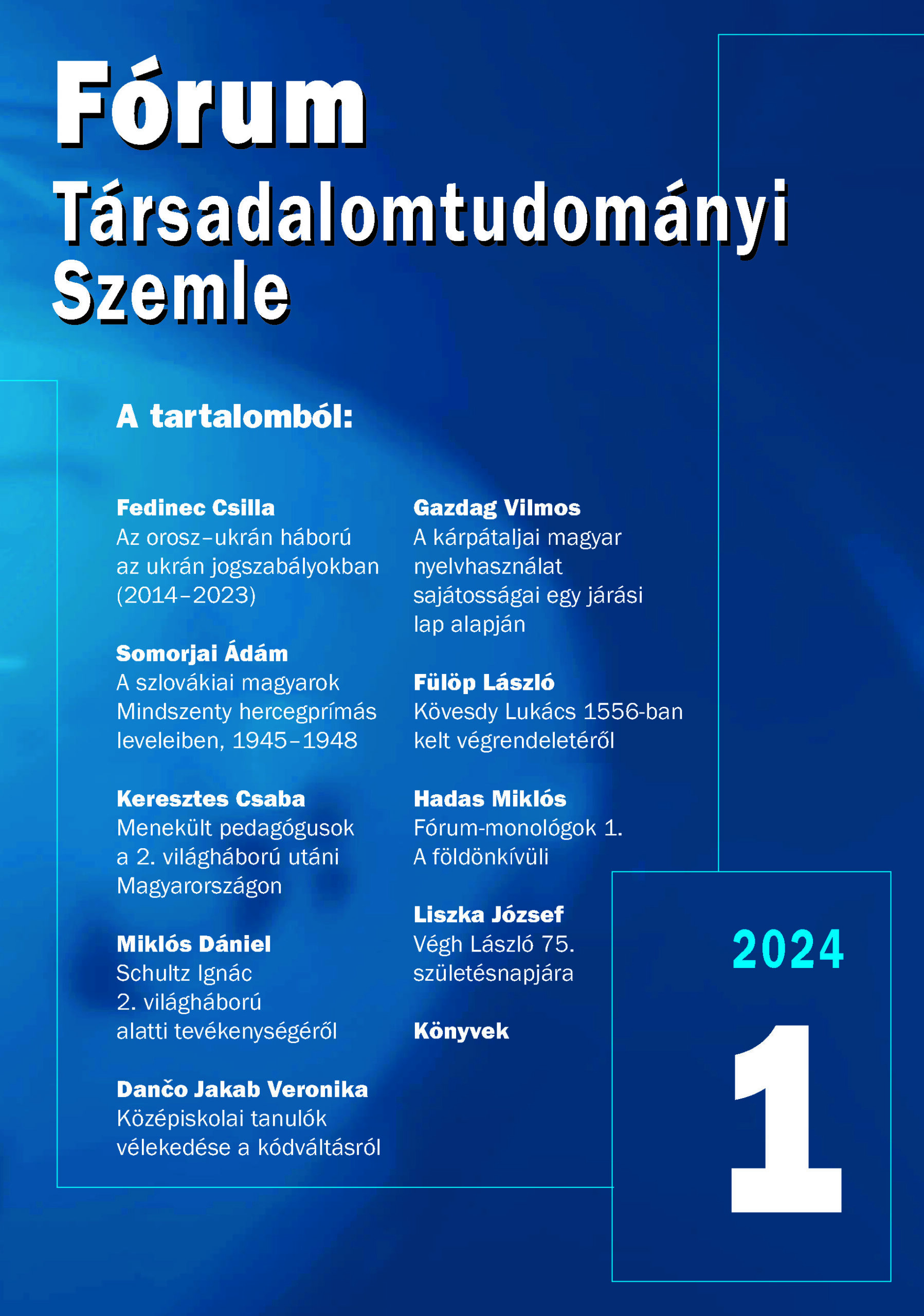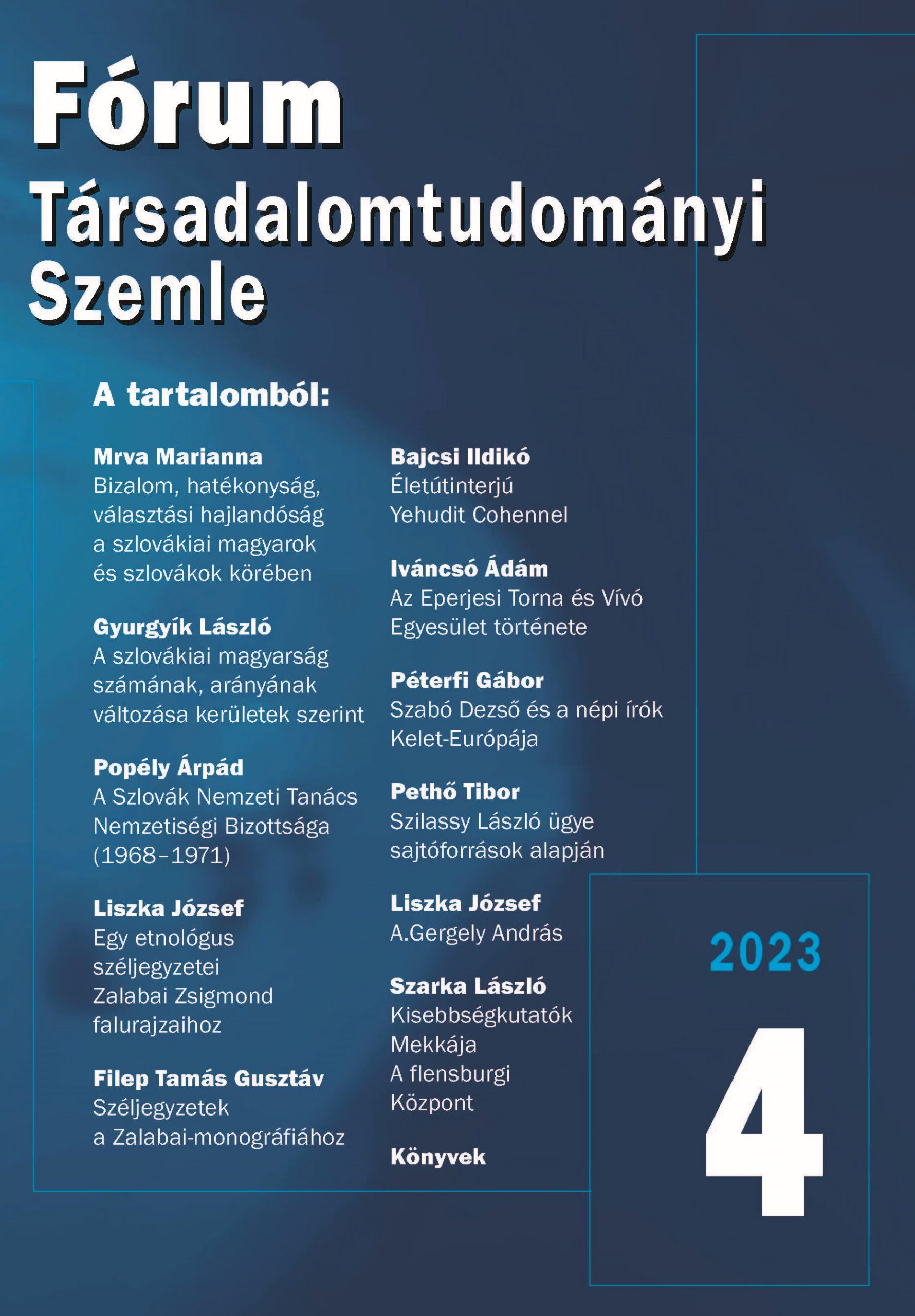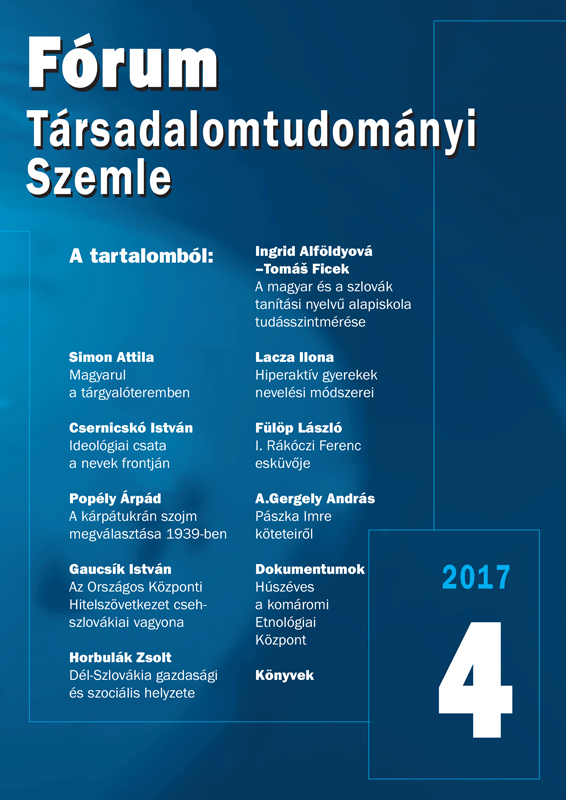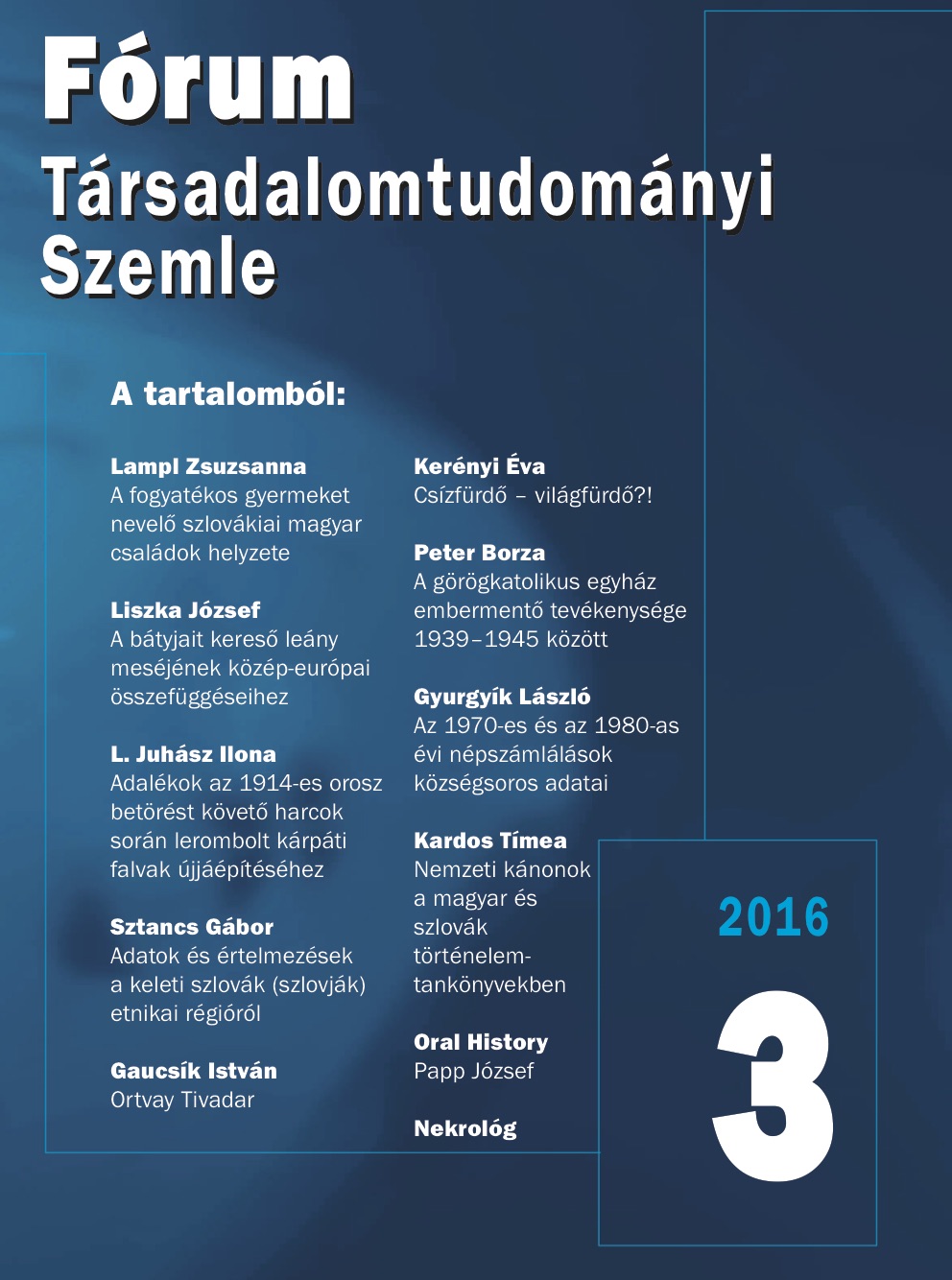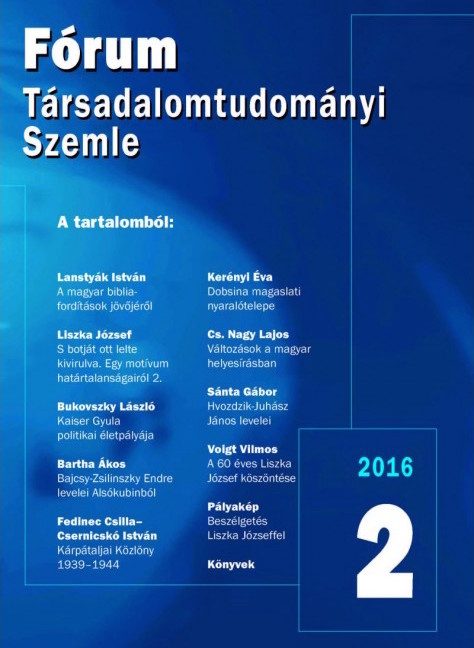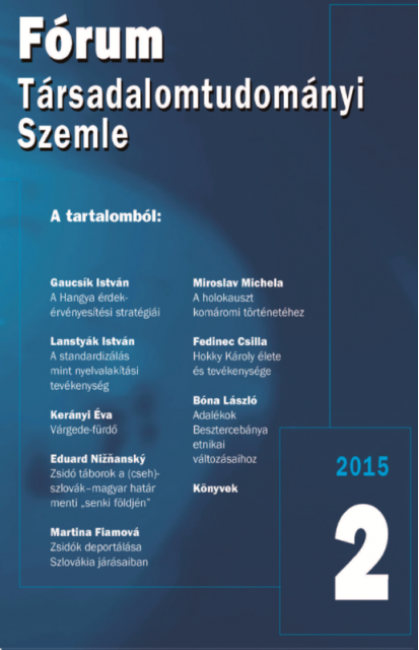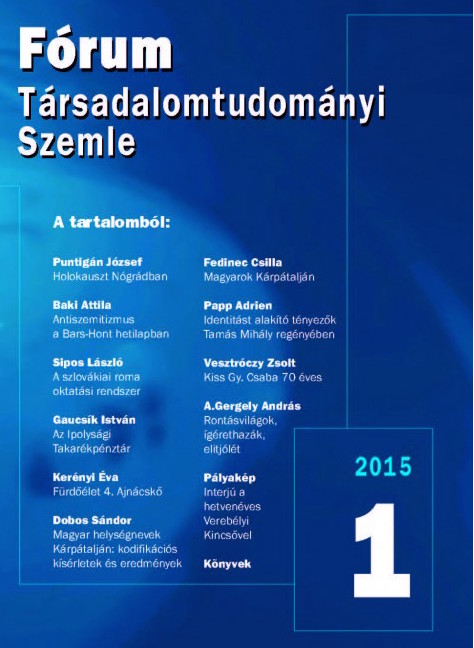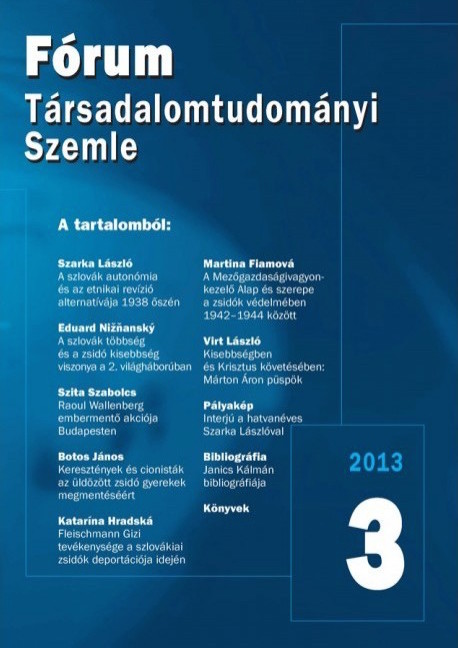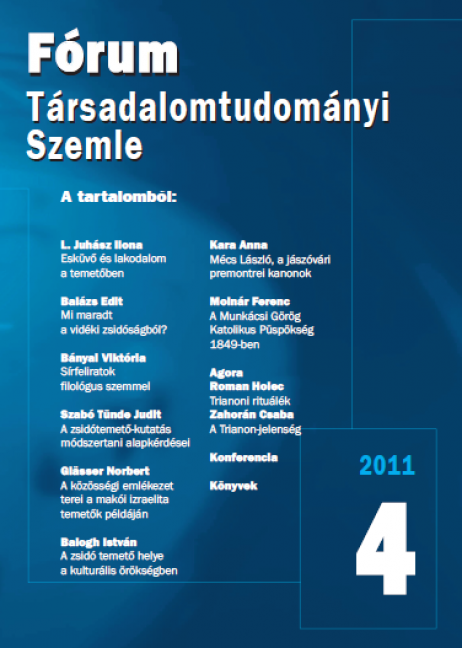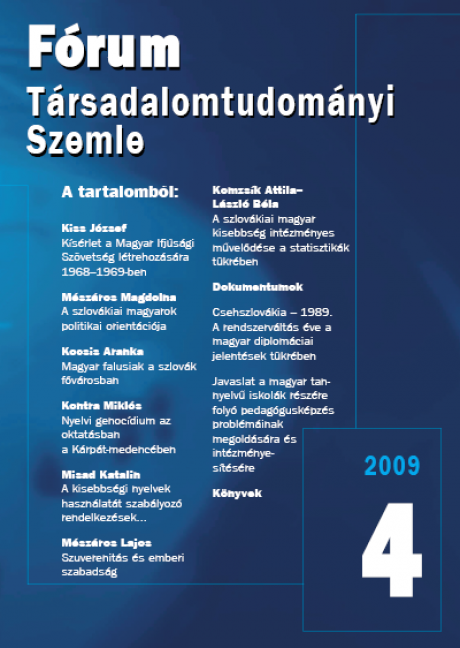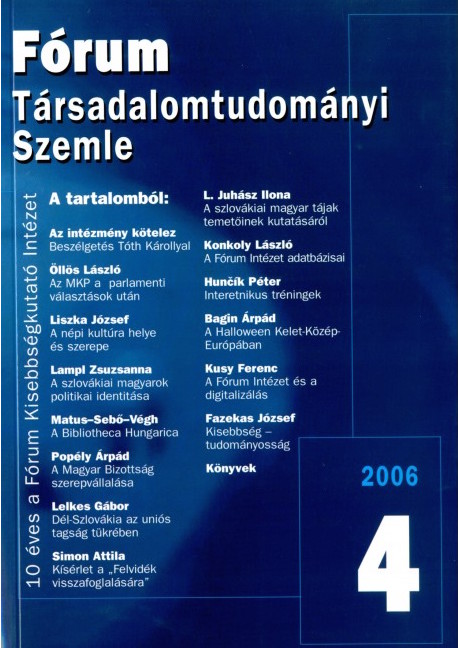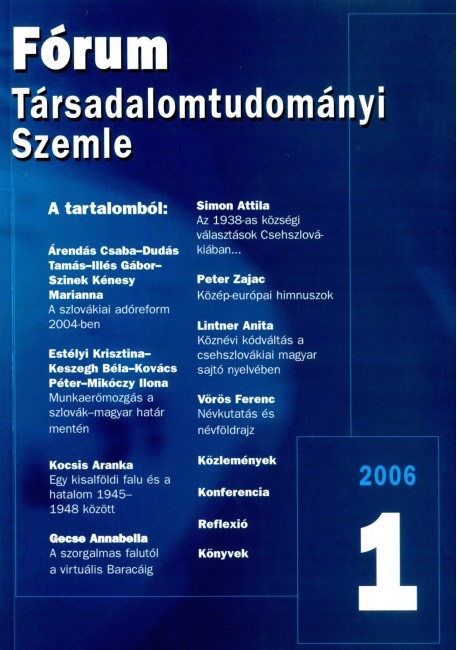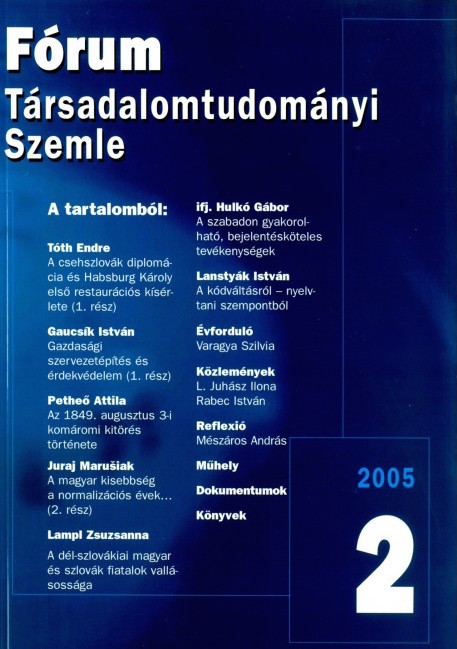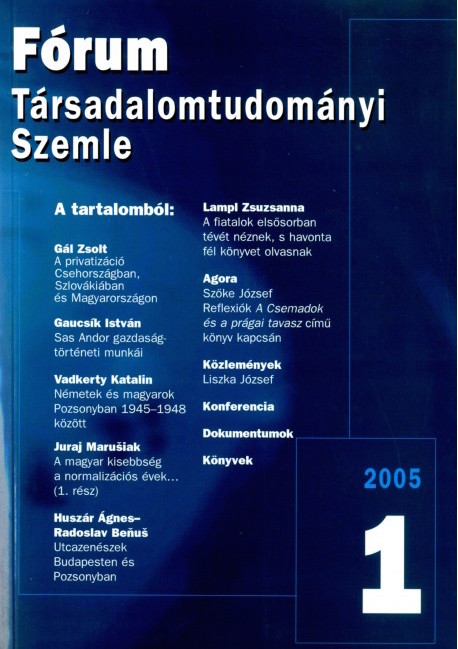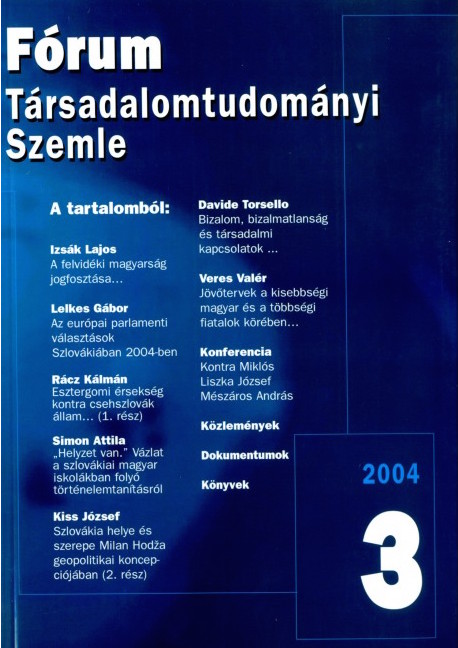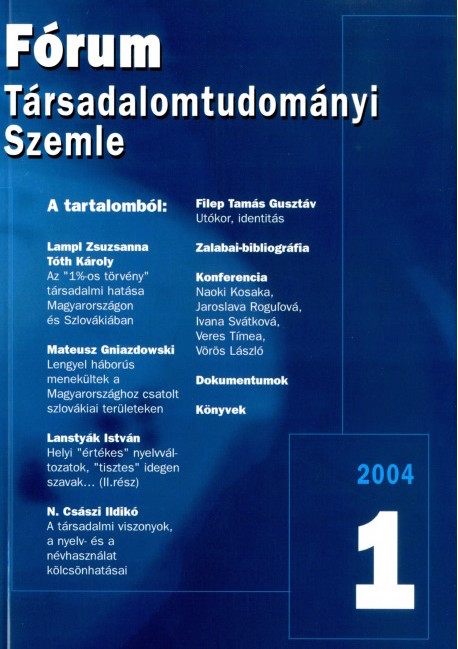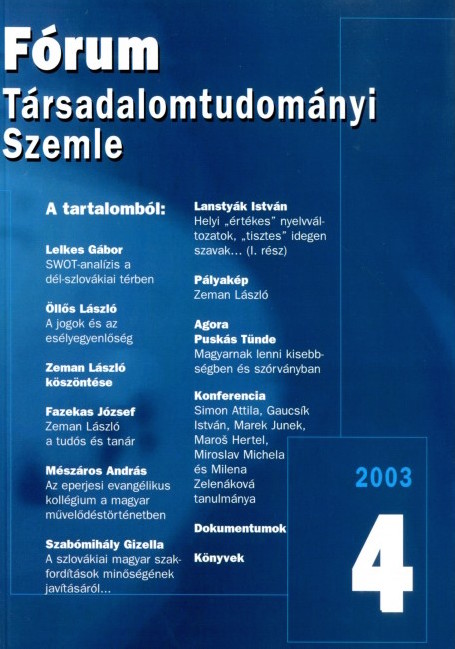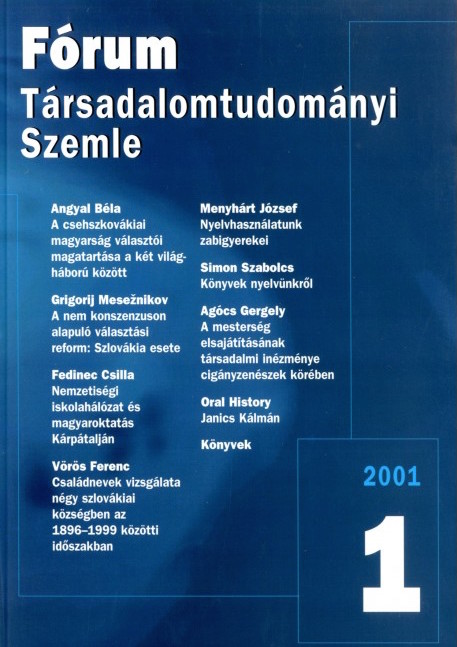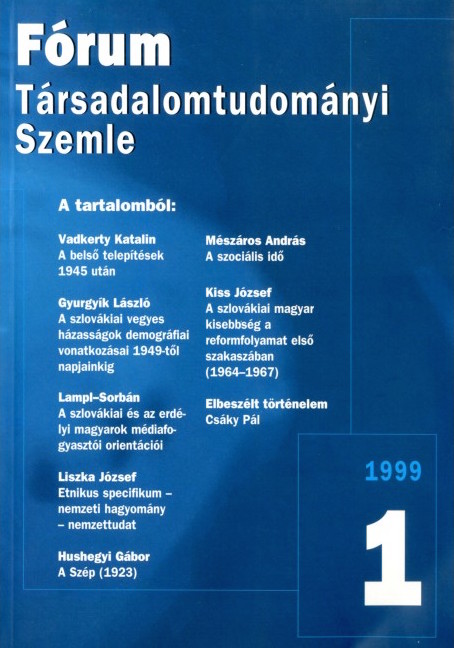“Undemocratic, Senseless and Cruel”. Hungarian Memoirs on the Population Exchange in Czechoslovakia
The study examines how the illegal Hungarian advocacy organisations in Slovakia perceived the Czechoslovak–Hungarian population exchange after World War II. In their memoranda to political and church leaders in Hungary, they unanimously rejected the principle of collective guilt, as well as unilateral resettlement or forced population exchange, and considered the only just solution to the minority question to be the granting of civil rights or the holding of a referendum and the annexation of the Hungarian-inhabited areas to Hungary. The signing of the population exchange agreement, and especially its content, was perceived as a huge insult, and was seen as a serious mistake, even a sin, on the part of Hungarian diplomacy. They expected the Hungarian government to protect the Hungarian minority. However, since Hungary’s options—as a losing country—were rather limited, it was not in a position, apart from a few exceptional cases, to assert its will and the interests of the Hungarian minority against the victorious Czechoslovakia.
Exploring Teachers’ Narrative Identity in a Hungarian Context in Slovakia – 1.
The focus of this thesis is to investigate the narrative identity of Hungarian teachers in Slovakia and to identify their identity factors. In the first section of the paper, we present the demographic and pedagogical characteristics of the Hungarian minority in Slovakia. In the following, we discuss the concept of narrative identity and its research possibilities, with a special emphasis on the Grounded Theory method, on which our study is based. Then we present the specificities and focal points of our research, as well as the group of our interviewees, which consisted of teachers from different regions of southern Slovakia. A particularity of our research is that the interviewees were all from pedagogue dynasties. In other words, from families where at least three generations of teachers succeeded each other. The in-depth interviews therefore provide insights not only into the life histories of individuals, but also into the similarities and differences of experiences within and between generations. In the second half of the paper, we will analyse in detail the common lessons from the in-depth interviews, which we will group into categories according to the Grounded Theory methodology and interpret them according to the concepts (key terms). The four categories we have identified are ‘dynastic patterns’, ‘professional grounding’, ‘critical horizons’ and ‘national identity and culture’. For reasons of space, this paper is published in two parts. The continuation will be published in the next issue.
István Lendvai and the 1923 Election in Cegléd
The study reconstructs the 1923 election in Cegléd, which was marked by nationally famous incidents, with the help of the legacy of István Lendvai, a racist publicist, and contemporary press articles. In addition to the election events, the intellectual portrait of István Lendvai, the conditions in the Cegléd constituency and the electoral law, amended in 1922 to serve the interests of the Bethlen government, are briefly described. In the course of reviewing the events, the irregularities of the elections of the period are outlined: both the abuses by the ruling party and the threatening actions of the Association of Awakening Hungarians supporting the racist candidate. As a result, the campaign in Cegléd became a prestige battle between the two parties – the left-wing and liberal forces were doomed to defeat from the start – which often also entailed the risk of a clash between the police and Lendvai’s supporters. The national scale of the election is illustrated by the mobilization of several government ministers – in addition to the security forces – to support the candidate of the Unity Party (Egységes Párt) with their personal presence; while on the other side, the Unity Party also appears in the person of Gyula Gömbös, who is now campaigning for Lendvai against his own party, together with people who would later become members of the Hungarian National Independence Party (Magyar Nemzeti Függetlenségi Párt). In short, the election in Cegléd was also an important stage in the organization of the racist group into a party.
The Relationship Between the Linguistic Landscape of the Village of Körtvélyes (Hrušov) and the Knowledge of Local Place-Names by the Population
My thesis is in line with my previous research, which focuses on the linguistic landscape and the name semiotic landscape, bilingualism and place-name research and its utility. The present paper is also based on this theme, and aims to present one aspect of the research conducted in a selected village in the Rožňava district. In the literature review, I will therefore discuss the above-mentioned concepts, explaining them in order to make the results more interpretable. I will then describe the location of the research, Hrušov, and the methods used in the research. The aspect on the basis of which I will examine this research in this paper is the relationship between linguistic landscape, bilingualism and knowledge of place-names. Thus, in presenting the results, I will describe the possible relationship between the name semiotic landscape, bilingualism, and knowledge and use of place names. n the conclusion, I would like to point out the importance of the name semiotic landscape and the importance of preserving Hungarian place-names.
The Social and Economic Impact of the Coronavirus Pandemic on the Development of Border Regions in the Case of the Hungarian–Slovak Border Regions
Borders in a given social context seem to be eternal and unchangeable, but their exact location, their permeability, their functions and the regulations assigned to them are in fact constantly changing according to the ideals of the respective societal eras. The SARS-CoV-2 neo-coronavirus infection, identified in December 2019 as the cause of Covid-19 disease, has become a global pandemic, causing a major health, economic and social crisis. The pandemic had an impact on the single market mechanisms established by the European Union, affecting freedoms—the free movement of services, goods, capital and people—and on almost every aspect of everyday life as it had been until then. In border regions, these effects were magnified. The active socio-economic interactions of the Hungarian–Slovak border regions were interrupted overnight as a result of the border traffic measures, causing significant negative changes and restructuring the functioning of cross-border processes.
Representation of the History of the Hungarian Minority in Slovakia in Slovak Primary School History Textbooks
In the past two decades, Gyula Popély, Attila Simon, László Szarka, Árpád Popély, Gergely Sallai, József Gyönyör and Katalin Vadkerty have written numerous summaries on the history of Hungarians in Slovakia, but what is less known is what children learn about this period sitting in the classroom. What can Hungarian students in Slovakia learn about their history from the textbooks, so that they can develop and shape their image of Hungarianness and form an emotional attachment to their nation, which could greatly contribute to halting the assimilation process that is affecting Hungarians in Slovakia. Of course, in addition to the school, the values conveyed by the family and home environment, society and culture are also decisive (e.g. commemorating the anniversary of the Treaty of Trianon or the day of remembrance of the Hungarians expelled from southern Slovakia). Since the school is the main source of such impact, we chose to study how our own history is reflected in history textbooks, and so we based our research on history textbooks for primary schools in Slovakia. Unfortunately, however, we do not know what other important events and additions, apart from the information in the textbooks, are mentioned in the lessons by the teachers who teach history. To explore this further, a comprehensive questionnaire survey of history teachers in primary schools in Slovakia would be needed, so in our study we have made observations and drawn conclusions only on the basis of the history textbooks analysed.
Borgesian Patterns in Lajos Grendel’s Novella Bőröndök tartalma [The Contents of Suitcases]
This paper examines the content of Lajos Grendel’s novella Bőröndök tartalma [The Contents of Suitcases], dedicated to Jorge Luis Borges and published in 1986. Its aim is to identify specific links between the Grendel novella and Borges’ oeuvre. The study picks out Borges’s short story The Book of Sand as a preface, and to prove the existing links between the two opuses, it first describes the chronological circumstances, then uses narratological and comparative methods to examine the text from the following aspects: standpoint, character traits, plot. The analysis also focuses on the differences between the two texts and on the characteristics of the infinite book, which becomes central to both ones. The paper also deals with the fantasy-based interpretation of magical realism and its manifestation in Grendel’s oeuvre (essays Prikk és Pantheosz [Prikk and Pantheos]; Valóság, fantasztikum, mágia [Reality, Fantasy, Magic]).








